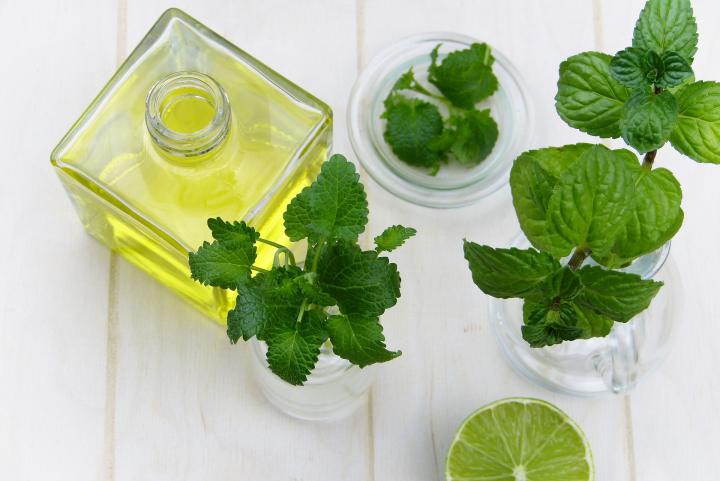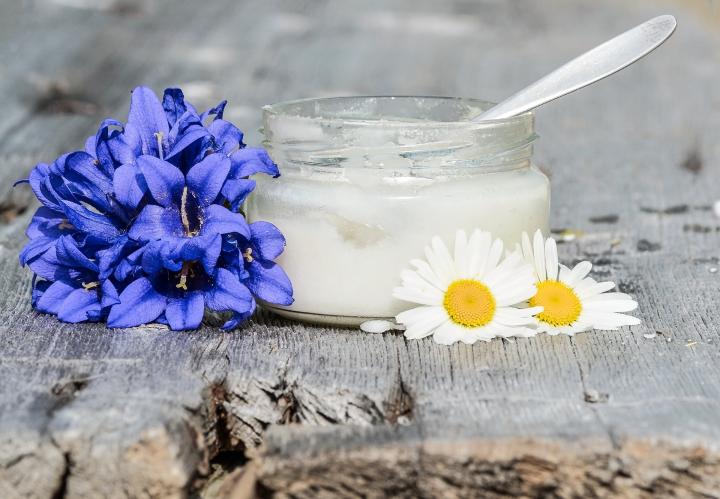
DIY Toiletry Recipes
ADVERTISEMENT
The deodorant recipe is PERFECT. It is the first deodorant that has satisfied me (including store bought varieties). I did not add essential oil. Effective, perfect mild smell (virgin coconut oil), perfect texture, and lovely appearance (especially if you put it in a jar lid as a tin).
Used baking soda directly on my hair followed by water with apple cider vinegar in it. Very effective. (This was in the shower.) It might be too strong, however, for those who use shampoo, and should only be used occasionally for anyone, as the baking soda is a little harsh.
My mother was a real working cowgirl when young, on her dad's ranch. Her recipe for toothpaste is simple: three parts baking soda, one part fine salt (I use sea salt) in a small container with a tight screw-on lid. Shake before use. Wet toothbrush and dip, apply to one side, dip again for other side, brush gently all over. Don't get powder too wet or it clumps but shaking before using again fixes that. The salt makes you salivate which helps kill germs and loosen bits between teeth. Rinse very well or tongue will feel dry. I've used this for over fifty years and have never had a cavity. True!
I started making my own deodorant at home and it works so much better. I’m using refillable roll-on bottles. I also waste less plastic doing this way.
Hello, my husband and I have been making our own toothpaste since 2012 with great results. No cavities yet and I am 35. You will need 1 Tablespoon almond oil, 3 Tablespoons of peppermint oil, and 1 Tablespoon spearmint oil. Mix and pour into glass container. Drop as many drops as you prefer on a toothbrush and brush away. This will not whiten teeth so for that I sometimes use baking soda mixed with peroxide and apply with a qtip, or sprinkle a tiny bit on toothbrush with oil. We got the idea from ORA-MD, but that got expensive fast. Now we just use their empty bottles (recipe fills 4 of their empty bottles)
Homemade shampoo I have had no luck, don't add cinnamon cause whoo did it burn!
all of the information shared was helpful!
Help for seborrheic dermatitis on head beard and upper chest worst I've had. Born and raised on a farm in AZ never had this stuff till farm town turned into metro city. I've read a lot of stuff on natural stuff for this. I'm sure every ones skin is different can't find the magic bullet.
Seborrheic dermatitis can be indeed be worse in wintertime as well as under beards. Did you happen to change your soap? Be sure to use a mild soap and completely wash off and use a moisturizer.
Do avoid ANY product that contains alcohol.
In terms of a home remedy, it can help to apply mineral oil or olive oil to your skin and leave in for an hour or so. Do this regularly.
Ask your pharmacy for a mild corticosteroid cream. If that doesn't work, try the antifungal cream ketoconazole.
Wear cotton clothing that has a smooth texture so it's less irritating to your chest. Try not to scratch. If it's really itchy, try applying hydrocortisone cream or calamine lotion just for relief.
As you may know, there are other reasons for seborrheic dermatitis that could be more serious so, if you haven't already done so, please consult a doctor. We hope you find relief!
Homemade shampoo actually seems like a great idea! I can't wait to try it :)
To get rid of flouride and chlorine in your drinking water try the Zero Water filter pitcher. It is not cheap, but I feel better and do not get sick as often since I have been using it. I use it for cooking and drinking water.
I like homemade remedies but do you have other ways to make shampoo if you don't have the Castile soap










